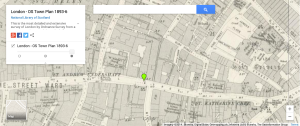Digital Humanities (DH) is a fairly new, trending topic that many seem to be experimenting with. Below is a list of some things that need to be kept in mind when delving into the world of DH:
1) Your topic should be of relevance to a larger community. The whole world now has access to all your information. Don’t you want at least some people to care about all of it?
2) Your project or site should be user friendly. Again, the whole world can see this. Don’t you want them to be able to navigate it? What’s the point of having all of this relevant information out there if no one can figure out how to use it?
3) There should be a theme. Your project should not just be a random assortment of facts. Your viewers will be confused as to what they are supposed to get out of it and will therefore, not care about it.
4) Grammar is still important! While this is the internet, and on social media sites it has become more and more acceptable to use “slang”, the DH community is an academic community and you want your readers to be able to understand the point you are trying to get across.
5) Plagiarism is still a crime! Cite everything that is not your original thought! Plagiarism is a crime with severe consequences that still apply to information you post online!
What makes a good DH project?
Aside from all the traits listed above, there are still other important factors to a good DH project. Your project should be easily navigated. Your readers and viewers should not have to do work, you should have done all the work for them. Make sure it is easy for them to find all of the information on your site! Your project should also be aesthetically appealing, but the colors and themes should not make the information hard to view/read.
How does DH let scholars ask new questions?
Well, the obvious answer is that there is more information, and the information is much more accessible to everyone. DH allows everyone to view the information that in the past had to be physically shared with you and wasn’t as easily found. Today, you can find another just by clicking a few buttons. When everyone has the information, the logical outcome is that more questions will be asked. Also, when everyone has all the information, scholars can ask questions within their projects. Whether it’s an interactive site or just a survey, scholars can get non-scholars answers now.














